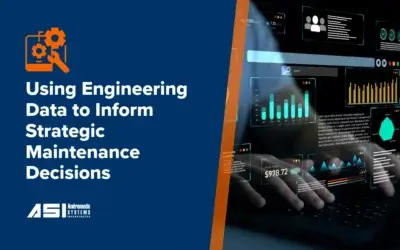Introduction
In the dynamic world of asset management and maintenance, the advent of Artificial Intelligence (AI) is reshaping the landscape, offering unparalleled opportunities for efficiency, cost-savings, and effective risk management. Coupled with Software as a Service (SaaS) solutions, AI is set to revolutionize the way we approach asset management and maintenance strategies.
The AI Revolution in Asset Management
AI’s potential in asset management is profound. With its ability to process and analyze vast amounts of data swiftly, AI can predict equipment failures before they occur, streamline maintenance processes, and optimize asset performance. This predictive maintenance, as opposed to reactive maintenance, not only extends the life of assets but also significantly reduces downtime and maintenance costs.
Efficiency and Cost-Savings
- Predictive Maintenance: AI algorithms can analyze historical data to predict when an asset might fail or need maintenance. This predictive approach means that businesses can carry out maintenance work more efficiently, reducing downtime and extending asset life.
- Resource Optimization: AI can optimize the scheduling of maintenance tasks and allocation of resources. By ensuring that the right resources are available at the right time, AI reduces wastage and improves operational efficiency.
- Energy Efficiency: AI systems can also manage energy use more efficiently, leading to cost savings. For example, AI can optimize the operation of HVAC systems in real-time based on current conditions and usage patterns.
Risk Management Benefits
- Enhanced Safety: By predicting potential equipment failures, AI can help prevent accidents and improve workplace safety.
- Compliance and Reporting: AI can assist in ensuring compliance with regulatory standards by automating the monitoring and reporting processes, thereby reducing the risk of non-compliance penalties.
- Data-Driven Decision Making: The insights provided by AI enable managers to make informed decisions about asset management, reducing the risks associated with human error.
Integrating AI with SaaS Solutions
The integration of AI with SaaS solutions in asset management brings a host of benefits. SaaS models offer flexibility, scalability, and cost-effectiveness, making advanced AI tools accessible to a wider range of businesses.
SaaS-AI Synergy
- Accessibility: SaaS models make AI tools more accessible to businesses of all sizes. Companies can use sophisticated AI tools without the need for heavy upfront investment in IT infrastructure.
- Scalability: As the business grows, the AI-SaaS solution can easily scale up to meet increased demands without significant additional costs or complexity.
- Continuous Improvement: SaaS solutions often come with continuous updates and improvements. This means that AI models and algorithms get better over time, providing ongoing benefits to asset management strategies.
Organizing AI and SaaS for Maximum Impact
To maximize the impact of AI and SaaS in asset management, organizations should focus on several key areas:
- Data Quality and Integration: Ensure that high-quality data is fed into AI systems. This might involve integrating various data sources and ensuring that data is clean, accurate, and up-to-date. Your software and tracking solutions make collection and maintenance of data more precise.
- Skill Development: Invest in training for staff to effectively use AI tools. Understanding how to interpret AI recommendations and insights is crucial for decision-making.
- Strategic Implementation: Implement AI tools in a way that aligns with the company’s broader strategic goals. AI should be seen as a tool to enhance, not replace, human decision-making processes.
- Vendor Selection: Choose the right SaaS vendor who not only provides robust AI solutions but also offers support and training necessary for effective implementation.
Challenges and Considerations
While the potential benefits are significant, there are challenges in implementing AI in asset management. Data privacy and security are paramount, especially when dealing with sensitive information. Additionally, there’s a need for a cultural shift within organizations to trust and rely on AI-driven recommendations. AI can radically improve output, but not without structural integrity and organization.
Conclusion
The integration of AI in asset management and maintenance, especially when combined with SaaS solutions, offers a promising future. From enhancing efficiency and reducing costs to improving risk management, the benefits are substantial. However, success in this endeavor requires a strategic approach, focusing on data quality, skill development, and choosing the right technology partners. As AI continues to evolve, it will undoubtedly become an indispensable tool in the asset management toolkit.
Newest on the Blog
Reliability Engineering: Designing Systems for Maximum Uptime
Keeping systems running without unexpected interruptions is essential for businesses that rely on physical assets. Whether it’s in aviation, defense, manufacturing, or transportation, downtime leads to lost productivity, increased costs, and lower customer...
Using Engineering Data to Inform Strategic Maintenance Decisions
Thoughtful maintenance planning is key to boosting performance and cutting costs in competitive industries. Engineering data plays a central role in this process, providing clear insights into how equipment runs and where improvements can be made. Let's discuss how...
Supportability Engineering: Reducing Life-Cycle Costs Through Strategic Planning
Supportability engineering plays a critical role in efficient systems management from inception to retirement. Supportability engineering employs the procedures and methodologies of supportability analysis to accomplish the planning, development, systems engineering,...



